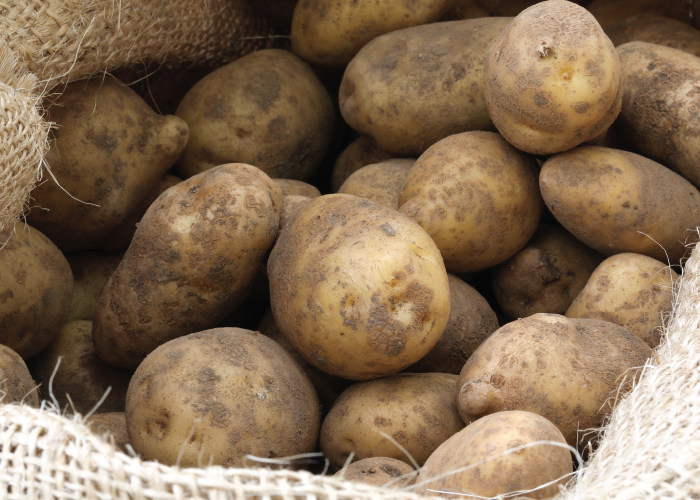
Less Shrink, Better Yields with CaTs® by Crop Vitality®
{Sponsored} Potatoes need calcium. Without adequate supply, growers could experience shrink and physiological problems. To ensure good-sized through storage, growers should consider CaTs.
CaTs, calcium thiosulfate, is a highly soluble liquid soil amendment and fertilizer. Danica Kluth and Dan Cook, Crop Vitality Agronomists, say calcium is essential for reducing shrinking during storage.
The ‘Storage Nutrient’
Picture a massive mound of potatoes stacked high in a storage shed. Those potatoes could experience shrink and shed weight, resulting in yield loss, if they didn’t receive enough calcium when the plant is putting out stolon and tuber roots, Kluth stresses.
Calcium is often called the “storage nutrient” because it’s important in providing cell wall strength in potatoes, she adds. Strong cell walls protect potatoes from physiological conditions such as brown center, hollow heart, blackspot bruising, and buck skinning. Growers may see slight yield increases when using CaTs, Kluth states. “But where CaTs shines is during storage to help protect the crop,” she adds.
Cook points out that growers get paid not for what goes into storage but what comes out of it. “Reducing the amount of loss from shrink means a better payback in the end for the grower,” he adds.
Application timing is critical to CaTs’ success. It should be applied when the tuber and stolon roots are small and developing and when the tuber is about egg size, Cook says, stressing that it is during that two- to three-week period when the crop needs the most calcium to build strong cell walls. It’s also vital to apply calcium that is 100% water soluble, which CaTs is. In fact, CaTs is 132 times more soluble than gypsum, which is 100 times more soluble than lime.
“Because of its solubility, you can make that application exactly when it’s needed and place it exactly where it needs to be” Cook says.
The three-week period to apply calcium differs for growers according to location. Kluth recommends growers check tubers to observe root growth before deciding on application timing.
Kluth also cautions against applying CaTs too late. The plant will direct calcium to its leaves rather than the tubers if CaTs is applied when the time window has closed, she adds.
Regarding how much calcium is needed during the period, Kluth and Cook advise 5 to 10 gallons of CaTs per acre, which provides about 3 to 6 pounds of calcium. “We usually recommend two or three applications of CaTs through sprinklers or the center pivot to get the calcium into the soil,” Cook adds.
Besides their individual benefits, CaTs also has nitrification inhibition properties that slow the conversion of ammonium to nitrate extending the soils nitrogen availability.
To learn more about how CaTs and other Crop Vitality products can benefit your potato crop, visit cropvitality.com/potatoes.







